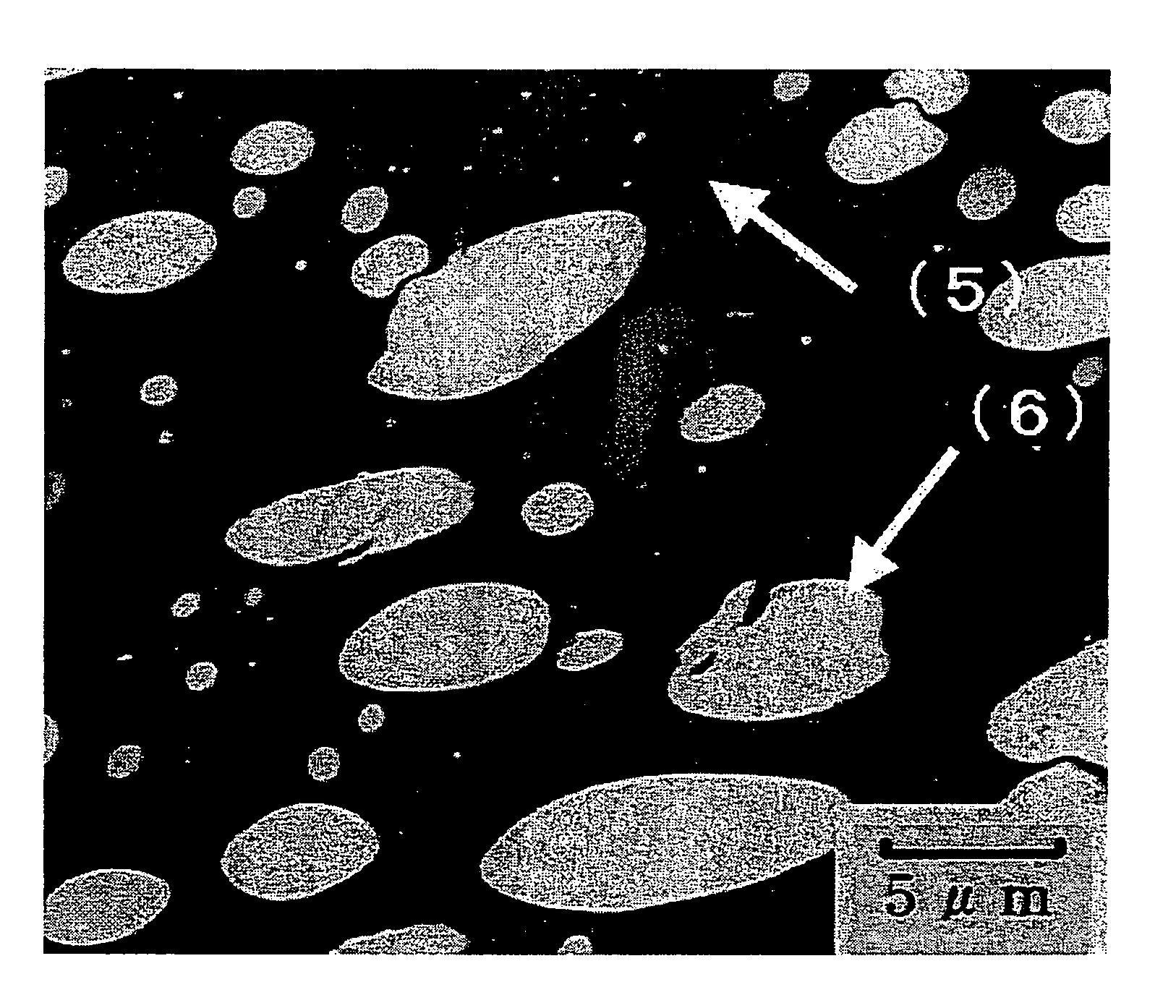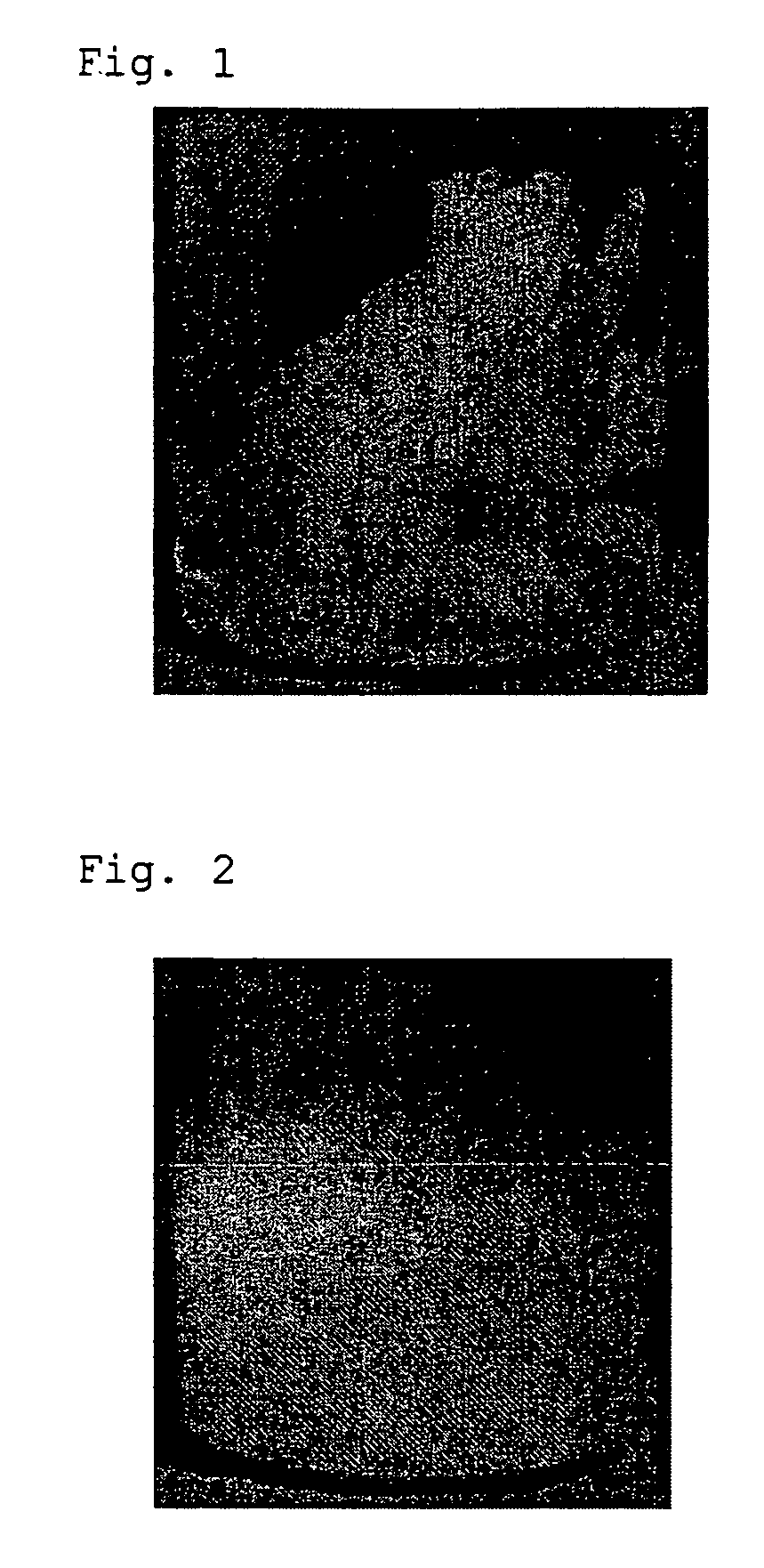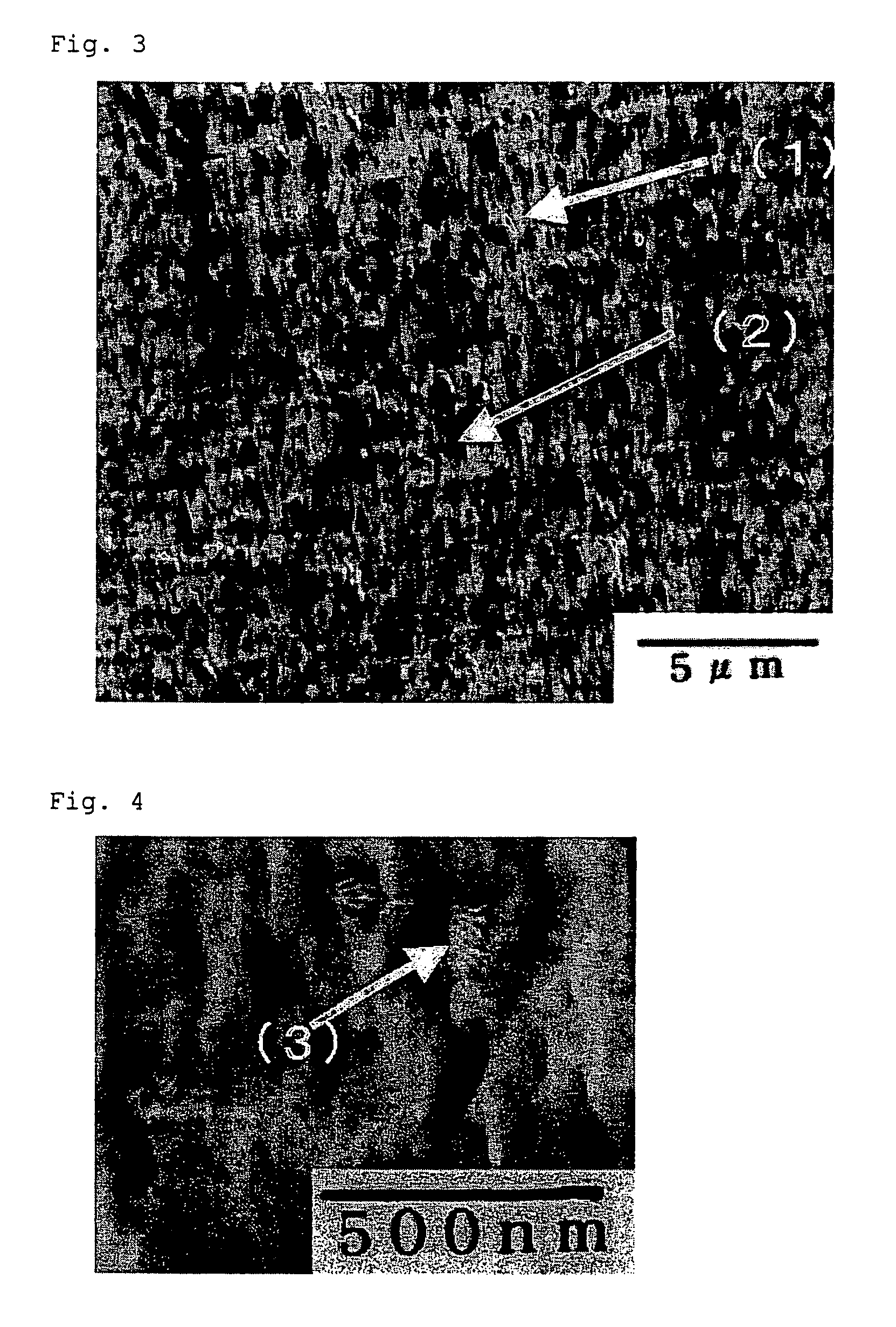Binder resin for toner, method for production thereof, and toner
a technology of toner and crystalline resin, which is applied in the direction of instruments, transportation and packaging, optics, etc., can solve the problems of difficult to ensure the stability of toner properties, difficult to maintain sufficient storage stability, and difficult dispersion of crystalline resin, etc., and achieve excellent offset resistance, excellent fixing properties, and excellent storage stability
- Summary
- Abstract
- Description
- Claims
- Application Information
AI Technical Summary
Benefits of technology
Problems solved by technology
Method used
Image
Examples
examples
Melting Peak Temperature, Heat Value and Glass Transition Temperature
[0071]The crystal melting peak temperature, heat of crystal melting and glass transition temperature of a toner or a binder resin and THF-insoluble portion thereof were obtained by using a differential scanning calorimeter (TA Instruments, DSC-Q1000) The sample was heated from 20 to 170° C. at a rate of 10° C. / min and then cooled down to 0° C. at a rate of 10° C. / min, and again heated up to 170° C. at a rate of 10° C. / min. In the course thereof, at the time of second heating, the melting peak temperature and the glass transition temperature were calculated in accordance with JIS K7121, “Testing methods for Transition Temperatures of Plastics.” The extrapolated glass transition initiation temperature was recorded as a measured value for the glass transition temperature. Further, at the time of second heating, the heat value of the crystal melting heat was calculated from the endothermic peak area in accordance with ...
examples 1 to 4
[0117]6 parts of carbon black (Cabot Corporation, REGAL 330r) and 1 part of a charge controlling agent (Orient Chemical Industries, Ltd., BONTRON S34) were fully mixed with Resins A to D as shown in Table 3 respectively using a Henschel mixer, and then the materials were melt-kneaded at 110° C. for 60 seconds of the residence time using a twin screw extruder (Ikegai Corporation, PCM-30 type), then cooled and coarsely grinding. The coarsely ground resin was finely ground using a jet mill, followed by classification, to obtain a powder having a volume average particle diameter of 8.5 μm. To 100 weight parts of the obtained powder was added 0.5 weight parts of an external additive (Nippon Aerosil Co., Ltd., Aerosil r972) and mixed using a Henschel mixer to obtain a toner for electrophotography. The toners for electrophotography prepared from Resins A to D were defined as Examples 1 to 4 respectively. The general characteristics of Examples 1 to 4 are shown in Table 5.
PUM
| Property | Measurement | Unit |
|---|---|---|
| melting peak temperature | aaaaa | aaaaa |
| dispersion diameter | aaaaa | aaaaa |
| size | aaaaa | aaaaa |
Abstract
Description
Claims
Application Information
 Login to View More
Login to View More - R&D
- Intellectual Property
- Life Sciences
- Materials
- Tech Scout
- Unparalleled Data Quality
- Higher Quality Content
- 60% Fewer Hallucinations
Browse by: Latest US Patents, China's latest patents, Technical Efficacy Thesaurus, Application Domain, Technology Topic, Popular Technical Reports.
© 2025 PatSnap. All rights reserved.Legal|Privacy policy|Modern Slavery Act Transparency Statement|Sitemap|About US| Contact US: help@patsnap.com



